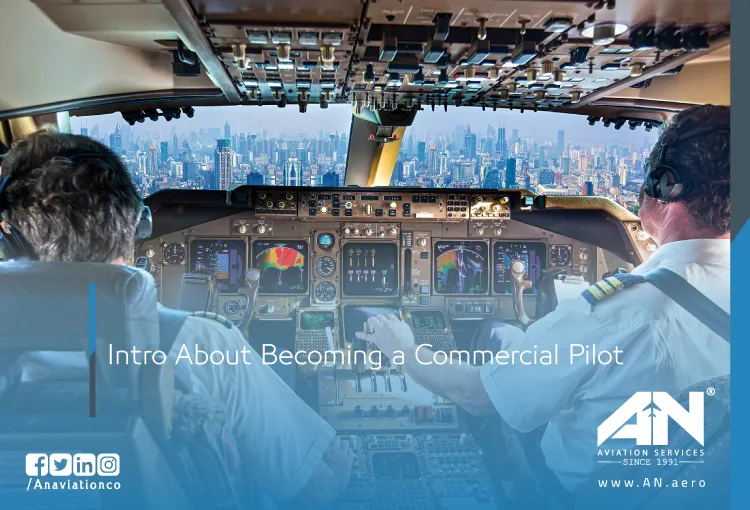
Dreaming of flying among the clouds and making a career out of it? Becoming a commercial pilot is an exciting and challenging journey that turns a passion for flying into a rewarding profession. However, it’s not a career path for the faint-hearted—it requires commitment, discipline, and countless hours of rigorous flight training programs.
Whether you’re a student pilot just getting started or someone exploring career options, this guide offers an overview of the key steps, skills, and certifications required to become a commercial airline pilot.
What Does a Commercial Pilot Do?
A commercial pilot is a professional authorized to earn a living through flying. This can involve flying commercial airline passengers, transporting cargo, conducting aerial surveys, or even becoming a certified flight instructor (CFI). Beyond merely operating powered aircraft, commercial pilots are expected to ensure the safety of their passengers, crew, and cargo by strictly adhering to aviation regulations and maintaining professional problem-solving skills in high-pressure situations.
The journey to becoming a commercial pilot begins with earning the necessary licenses and accumulating flight time, which we’ll explore in detail.
The Path to Becoming a Commercial Pilot
Step 1: Obtain a Student Pilot Certificate
Every journey begins somewhere, and for aspiring commercial pilots, it starts with securing a student pilot certificate. This certificate is issued by the Federal Aviation Administration (FAA) in the United States or an equivalent authority in other regions. It allows you to begin hands-on training under the supervision of a qualified instructor.
At this stage, you’ll also need to pass a medical certificate examination to ensure you meet the physical and mental fitness standards required for flying.
Step 2: Complete a Private Pilot License (PPL)
The next step is earning a Private Pilot License (PPL). A PPL allows you to fly for personal use, gaining essential experience in flight training programs. While it doesn’t permit you to earn income from flying, it lays the foundation for further certifications and improves your skills as a pilot in command.
Step 3: Begin Commercial Pilot License (CPL) Training
The most crucial milestone on this journey is obtaining a commercial pilot license (CPL). CPL training builds on the skills learned during your private pilot training and focuses on more advanced topics, such as navigating complex airspace, handling larger aircraft, and flying in various weather conditions.
Earning a CPL involves completing a minimum number of flight hours, which varies by region. For instance, the FAA requires at least 250 hours of flight time to qualify for a CPL in the United States.
Step 4: Accumulate Flight Time and Certifications
The aviation industry places a high value on flight hours, making it essential to continue accumulating experience even after earning a CPL. Many aspiring commercial airline pilots gain additional hours by working as a flight instructor or flying for regional or charter airlines.
Some pilots also pursue advanced certifications, such as the Airline Transport Pilot (ATP) certificate, which is a requirement for flying large commercial airliners. This certification represents the highest level of pilot training and is often the last step before joining a major airline.
Skills and Qualities Required for Success
Becoming a commercial pilot isn’t just about technical proficiency; it also requires a unique set of personal and professional qualities. Successful pilots must possess:
- Problem-Solving Skills: The ability to think clearly and make quick decisions under pressure.
- Attention to Detail: Ensuring safety by following checklists and spotting potential issues before they escalate.
- Communication Skills: Collaborating with the flight crew, air traffic control, and passengers requires clear and effective communication.
- Discipline and Focus: The demanding nature of aviation requires consistent discipline and a commitment to following strict operating procedures.
Career Paths in Aviation
Once you’ve earned your commercial pilot certificate, a variety of career opportunities open up in the aviation sector. Here are some of the most common paths:
- Regional Airline Pilot: Many pilots begin their careers flying for regional airlines, gaining experience in smaller aircraft before moving to major carriers.
- Charter or Corporate Pilot: Flying private charter flights or corporate jets offers a more personalized and flexible flying experience.
- Certified Flight Instructor (CFI): Teaching others how to fly is not only rewarding but also an excellent way to log additional flight hours.
- Specialized Pilots: Opportunities exist in aerial firefighting, search and rescue, agricultural spraying, and other specialized fields.
The Role of Flight Schools and Training Programs
Enrolling in a reputable flight school is essential for becoming a commercial airline pilot. Flight schools offer structured training programs that cover both theoretical knowledge and practical flying experience. Many schools also provide simulators that mimic real-world scenarios, helping student pilots develop their skills in a controlled environment.
When choosing a pilot training program, consider factors like:
- The school’s reputation within the aviation industry.
- Access to modern training aircraft and simulators.
- Support for advanced certifications, such as the ATP certificate.
Challenges and Rewards of a Pilot Career
Becoming a commercial pilot is not without its challenges. The training process is intensive, requiring significant time, effort, and financial investment. Additionally, pilots often face irregular schedules, time away from home, and the responsibility of ensuring the safety of everyone on board.
However, the rewards of a pilot career far outweigh these challenges. From the thrill of flying powered aircraft to the satisfaction of overcoming complex scenarios, every day brings new opportunities for growth.
Conclusion: Taking Flight Toward Your Dream Career
Becoming a commercial pilot is a journey filled with dedication, learning, and the pursuit of excellence. By following the necessary steps—earning certifications, gaining experience, and honing your skills—you can turn your passion for flying into a fulfilling career.
Whether you dream of piloting commercial airliners, flying private jets, or teaching others as a flight instructor, the aviation industry offers a world of opportunities. The sky isn’t just the limit—it’s your workplace.

